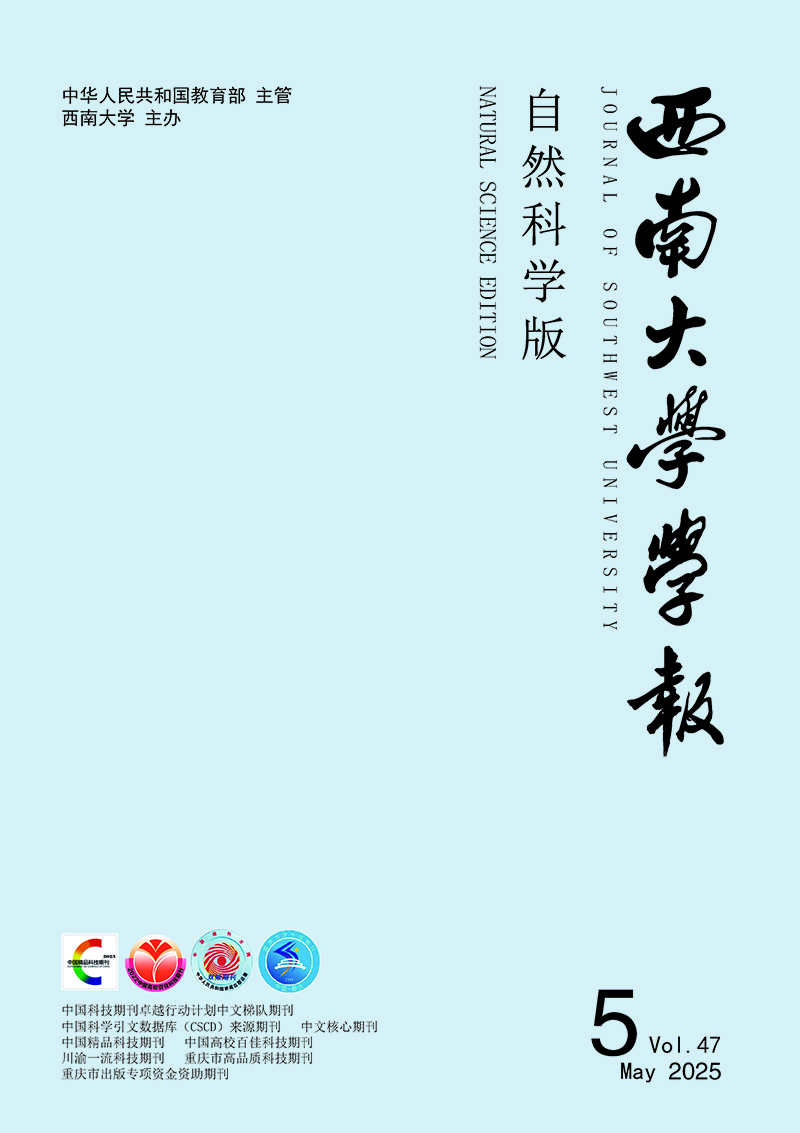-
文献[1]推广了伪概周期函数,介绍了加权伪概周期函数及其相关性质.许多的工作都是围绕着微分方程的加权伪概周期解展开的[2-9].文献[10]给出了双加权伪概周期函数的概念,进一步推广了伪概周期函数.随着脉冲微分方程的发展,概周期理论得到进一步的发展,分段伪概周期函数、分段加权伪概周期函数与分段双加权伪概周期函数相继被提出[11-13].关于微分方程,数学工作者做了许多的工作[14-24].本文的工作是对分段双加权伪概周期函数[25]研究的延续,主要介绍了分段双加权伪概周期函数的复合定理,以及双加权伪概周期函数与双加权伪概周期序列之间的关系.
HTML
-
现在介绍分段加权伪概周期函数的概念.首先定义集合U为加权函数全体{μ:ℝ→(0,∞)},则
加权函数具有如文献[2]中定义的加权函数的相关性质,在此将不再赘述.对于ρ,υ∈U∞,S>0,f∈PCT(ℝ,X),定义
分段双加权遍历空间PPAPT0(X,ρ,υ)和PPAPT0(Ω,X,ρ,υ),有如下定义:
PPAPT0(X,ρ,υ)在上确界范数下是Banach空间.分段双加权伪概周期函数空间为
定理1 令f∈PPAPT(Ω,X,ρ,υ)且h∈PPAPT(Ω,ρ,υ).假设下面的条件成立:
(H1)
$\rho \in U_T^0, v \in {U_\infty }, \mathop {\inf }\limits_{S > 0} \frac{{\mu (S, v)}}{{\mu (S, \rho )}} > 0, {\rm{且}}\mathop {\lim }\limits_{S > 0} \frac{{\mu (S, v)}}{{\mu (S, \rho )}} < \infty $ ;(H2) f(t,·)对∀t∈ℝ在每个有界子集Ω上是一致连续的,即对∀ε>0和有界集K⊂Ω,存在δ>0,使得当x,y∈K且‖x-y‖<δ时,‖f(t,x)-f(t,y)‖<ε对∀t∈ℝ成立;
(H3) f(ℝ,K)={f(t,x):t∈ℝ,x∈K}对每个有界子集K∈Ω是有界的.
若R(h)⊂K,那么f(t,h(t))∈PPAPT(X,ρ,υ).
证 因为f∈PPAPT(Ω,X,ρ,υ),h∈PPAPT(Ω,ρ,υ),所以f=fap+fe且h=hap+he.则函数f(·,h(·))可以做如下的分解:
由于R(hap)在X上是相对紧的,则∀t∈ℝ,fap(t,·)在R(hap)上是一致连续的.由文献[11]的定理3.1,容易看出fap(·,hap(·))∈APT(ℝ,X).下面证明
步骤1 证明f(·,h(·))-f(·,hap(·))∈PPAPT0(X,ρ,υ).
令K∈Ω是有界的,使得R(h),R(hap)⊂K.由条件(H3),存在M>0使得
同时,由条件(H2),对于ε>0,存在δ>0,使得当x,y∈K且‖x-y‖<δ时,有
因为he∈PPAPT0(Ω,ρ,υ),根据条件(H1),有
其中
因此存在M,S0>0,使得当S>S0时,有
又因为
所以
由平移不变性可得,对S>S0,有
步骤2 证明fe(·,hap(·))∈PPAPT0(X,ρ,υ).
因为f=fap+fe,且当t∈ℝ时,fap(t,·)在R(hap)上是一致连续的.那么由条件(H2)可知,fe(t,x)=f(t,x)-fap(t,x)关于t在x∈R(hap)上是一致连续的.即对于ε>0,存在δ>0,使得当x,y∈R(hap)且‖x-y‖<δ时,有
由R(hap)在X上是相对紧的,则对ε>0,可以找到有限n个以x1,x2,…,xn∈R(hap)为中心的开球Ok,使得
$R\left( {{h^{ap}}} \right) \subset \bigcup\limits_{k = 1}^n {{O_k}} $ 且集合Bk={t∈ℝ:hap(t)∈Ok}是开的,并且
$R = \bigcup\limits_{k = 1}^n {{B_k}} $ .令那么当i≠ j,1≤i,j≤n并且
$R = \bigcup\limits_{k = 1}^n {{E_k}} $ 时,Ei∩Ej=Ø.因为fe(·,xk)∈PPAPT0(Ω,X,ρ,υ),所以存在S0>0,使得
因此对于S>S0,有
则fe(·,hap(·))∈PPAPT0(X,ρ,υ).
-
令Vs为序列(加权)σ:ℤ→(0,+∞)的集合.对于σ∈Vs且T∈ℤ+,令
定义1 令σ,ϑ∈Vs∞,序列{x(n)}:ℤ→X是有界的且满足
那么序列{x(n)}被称为σ,ϑ-PAP0序列,我们用PAP0S(X,σ,ϑ)来标记.
类似于文献[12]中引理2.1的证明,可以得到下面的引理:
引理1 令σ,ϑ∈Vs∞.如果
且x:ℤ→X是有界的.对∀ε>0,S>0,S∈ℤ,定义
故x∈PAP0S(X,σ,ϑ)的充分必要条件是
$\mathop {\lim }\limits_{S \to \infty } \frac{{{\mu _s}\left( {{M_{S, \varepsilon }}(x), \vartheta } \right)}}{{{\mu _s}(n, \sigma )}} = 0$ .定义
那么
由
$\hat \sigma (j), \hat \vartheta (j)$ 的定义可看出:$\mathop {\lim }\limits_{n \to \infty } \frac{{\sum\limits_{i = - n}^n {\hat \vartheta } (i)}}{{\sum\limits_{i = - n}^n {\hat \sigma } (i)}} < \infty $ 的充分必要条件是$\mathop {\lim }\limits_{s \to \infty } \frac{{\int_{ - s}^s v (t){\rm{d}}t}}{{\int_{ - s}^s \rho (t){\rm{d}}t}} < \infty $ .类似于文献[12]中引理2.6和定理2.5的证明,容易得到下面的两个引理:
引理2 令u∈PPAPT0(X,ρ,υ).那么
引理3 序列{an}n∈ℤ∈PAP0S(X,
$\hat \sigma , \hat \vartheta $ )的充分必要条件是:存在a∈PPAPT0(X,ρ,υ)∩UPCT(ℝ,X),使得a(tn)=an,n∈ℤ.进一步,PAP0S(X,$\hat \sigma , \hat \vartheta $ )是平移不变的.定理2 令{Ii(x)}∈PAPS(X,
$\hat \sigma , \hat \vartheta $ ),x∈Ω.当u(ℝ)⊂Ω时,u∈PPAPT(X,ρ,υ)∩UPCT(ℝ,X).如果下面的条件成立:(H4) {Ii(u):n∈ℤ,u∈K}在每个子集K⊆Ω上是有界的;
(H5)当i∈ℤ时,Ii(u)在u∈Ω处一致连续.
那么{Ii(u(ti))}∈PAPS(X,
$\hat \sigma , \hat \vartheta $ ).证 类似于文献[12]中引理3.7的证明,容易证明{uap(ti)}∈APS(X).此外,由引理3可得{ue(ti)}∈PAP0S(X,
$\hat \sigma , \hat \vartheta $ ),所以{u(ti)}∈PAPS(X).根据文献[13]的引理3,当y1,y2∈Ω时,有结合条件(H5)可得,当i∈ℤ时,Iiap(u)是关于u∈Ω一致连续的,且Iie(u)也是一致连续的.定义
那么
由文献[11]的定理3.4,容易看出{P1(i)}∈APS(X).所以下面只需要证明{P2(i)}∈PAP0S(X,
$\hat \sigma , \hat \vartheta $ ).注意到{u(ti)}和uap(ti)是有界的.令K⊂Ω是有界的,使得u(ti),uap(ti)⊂K,i∈ℤ.由条件(H5),对∀ε>0,存在δ1>0使得
容易看出K1={uap(ti):i∈ℤ}是相对紧的.因为当i∈ℤ时,Iie在u∈K1处是一致连续的.那么对ε>0,存在
$0 < \delta < \max \left\{ {{\delta _1}, \frac{\varepsilon }{4}} \right\}$ 使得当y1,y2∈K1且‖y1-y2‖<δ时,有由于K1是相对紧的,则存在x1,…,xm∈K1使得对每个i,有
所以如果‖Iie(xk)‖<δ,那么
因此,如果‖ue(ti)‖<δ且‖Iie(xk)‖<δ,k=1,2,…,m,那么
此外,对于S>0,有
因为{ue(ti)},{Iie(xk)}∈PAP0S(X,
$\hat \sigma , \hat \vartheta $ ),k=1,…,m,由文献[13]的引理1以及定理1,可得因此
所以P2∈PAP0S(X,
$\hat \sigma , \hat \vartheta $ ).






 DownLoad:
DownLoad: